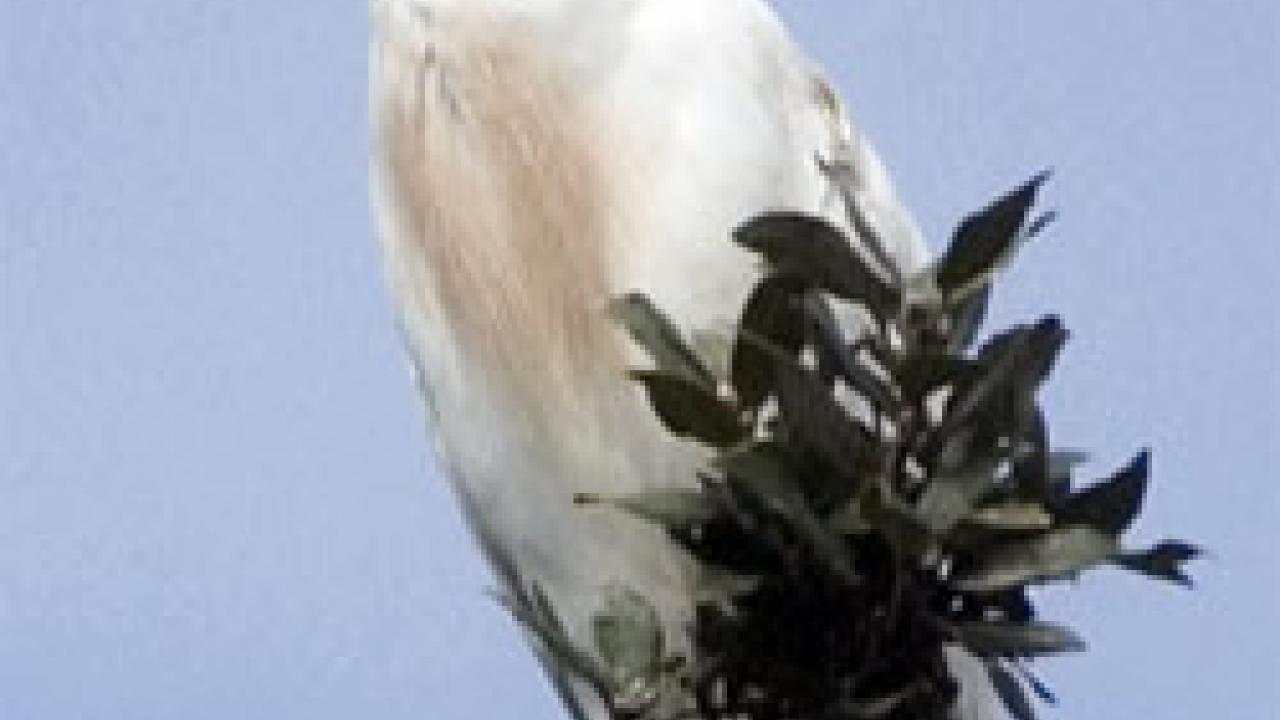A program to discourage egrets and herons from nesting in the campus’s Shields Oak Grove will continue next year with a bit more flash.
When the first black-crowned night-herons arrive in March, they will be greeted with disturbing but harmless distress calls and laser lights, said Ellen Zagory, director of horticulture for the UC Davis Arboretum and a member of the arboretum oak and wildlife management team.
The annoyances will persist, at dusk and dawn, as long as the big birds continue landing in the oak trees. Based on the annual pattern seen in the eight years since the first nests were built, the team expects to have to shoo away two overlapping waves of birds — night-herons, snowy egrets and great egrets followed by a large and prolonged wave of cattle egrets.
The grove was established at the arboretum’s east end in 1963 and became a resource for scholars, conservationists and recreational visitors. The big, wading birds began using the trees as a rookery — a place to nest and raise offspring — in 2000. Since then, their nests have become more numerous and spread over a larger area of the grove. In 2006, there were 631 nests; in 2008, there were 866 nests.
In addition to the rookery, the grove has also become a roost for non-nesting birds during the breeding season. While the rookery numbers have steadily risen, the roost numbers fluctuate widely, for unknown reasons. In 2007, there were 800 birds simply roosting in the grove; in 2008, there were only a handful.
What began as an interesting wildlife spectacle has become a serious threat to the oak trees’ health, largely because of the toxic qualities of the birds’ excrement, or guano, Zagory has said.
In hopes of a sustainable balance for both trees and birds, the arboretum oak and wildlife management team has tested a variety of nesting deterrents. Yet the rookery kept growing, although last year’s trial with a hand-held laser light was very effective in moving birds away from a selected grove of trees, said Andy Engilis, curator of the UC Davis Museum of Wildlife and Fish Biology, and the wild-bird expert on the team.
“No single method alone has been shown to be effective in deterring colonial-nesting birds, so we need to throw a suite of tactics at them,” said Engilis. “This year, we will use laser lights in combination with bird distress calls broadcast from loudspeakers, human presence and even, possibly, small noisemaking fireworks.”
If any birds are resolute enough to lay eggs, the entire deterrent program will stop, in order to prevent any chick deaths, Engilis said.
”The keys to success will be diversity of methods, timing, persistence and organization,” he concluded. “The university is committed to finding a solution that works for both birds and trees. We are hopeful that this season we have the right formula.”
